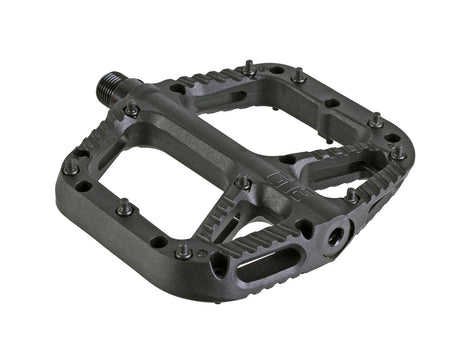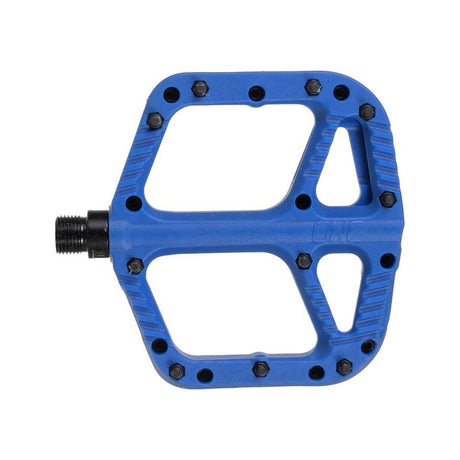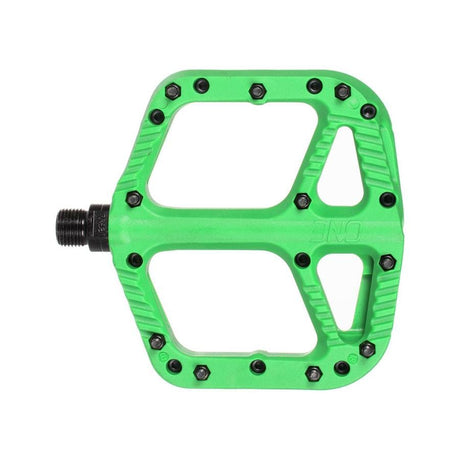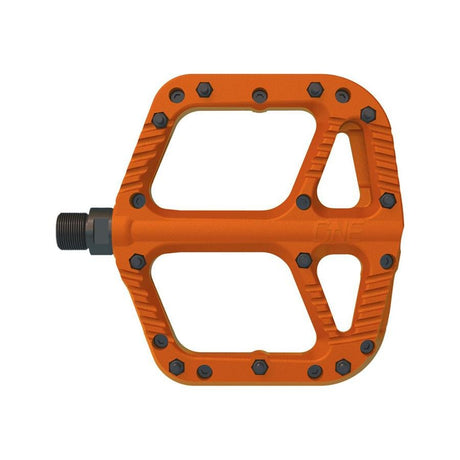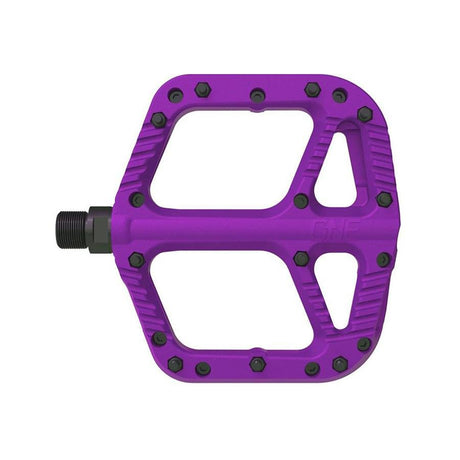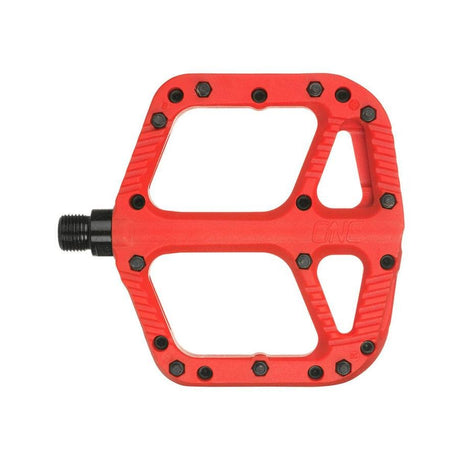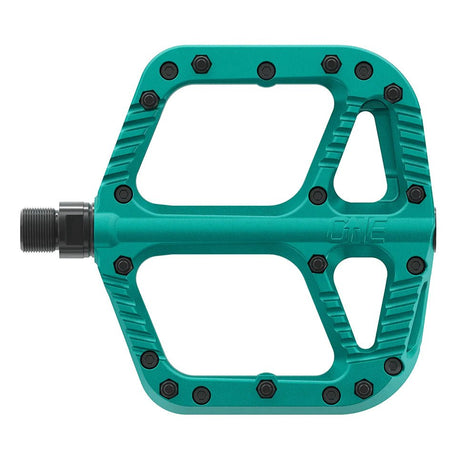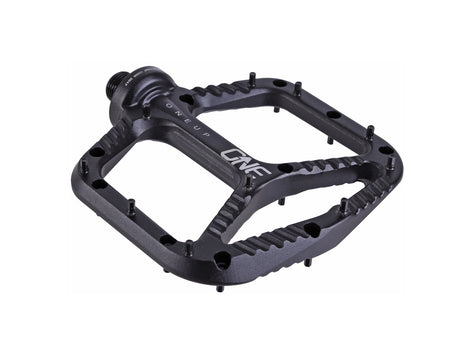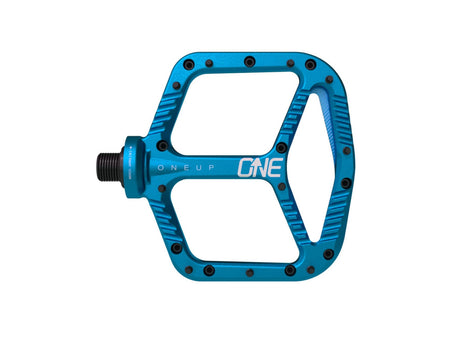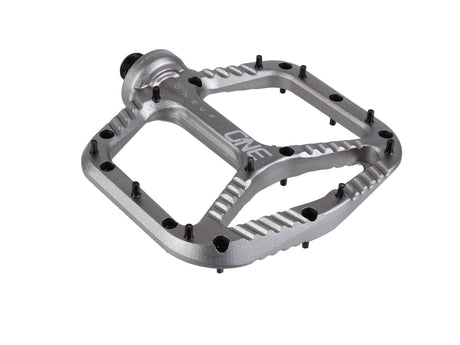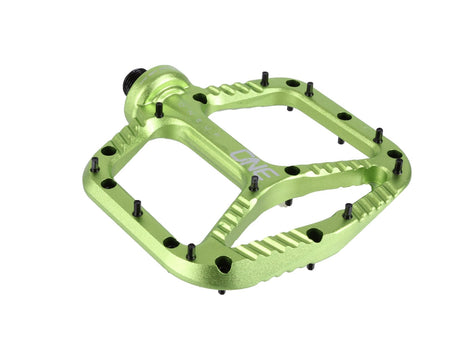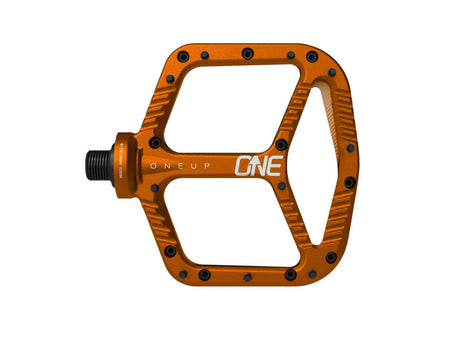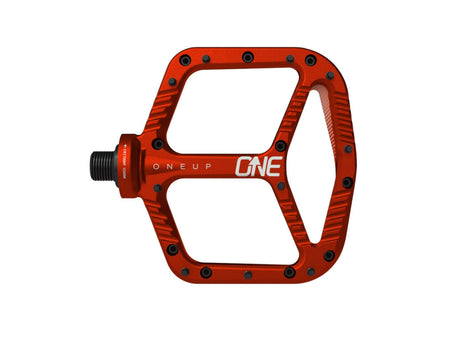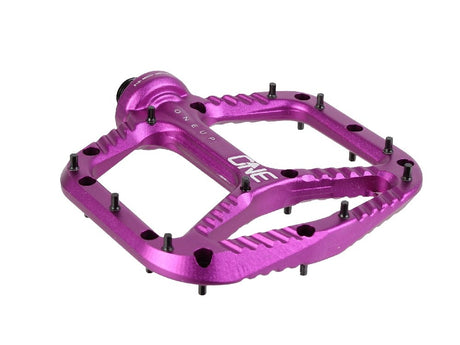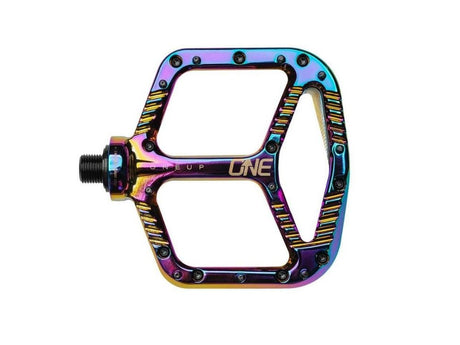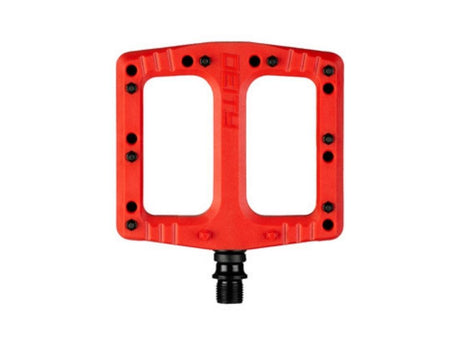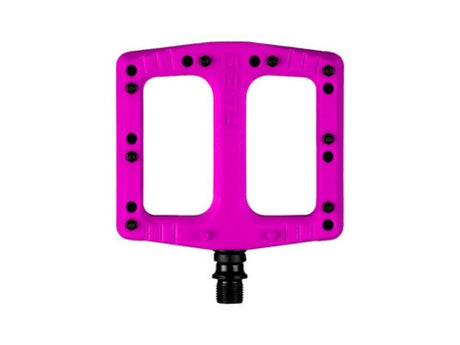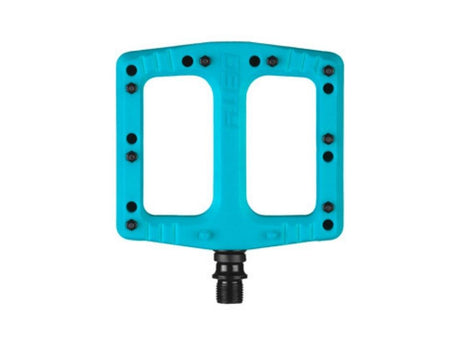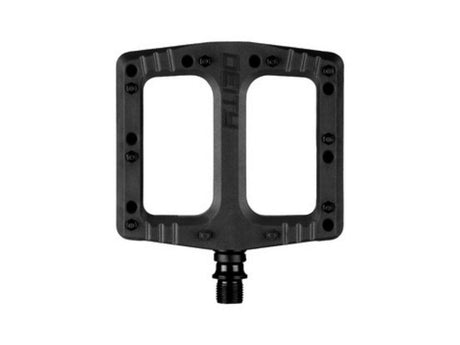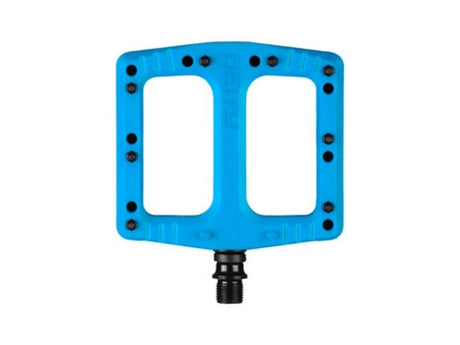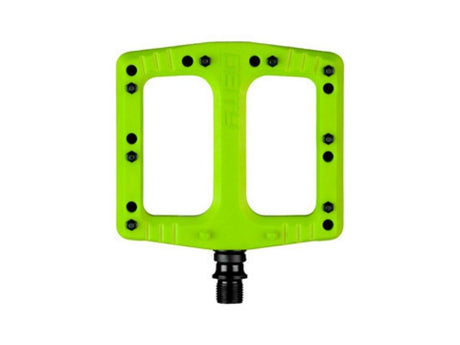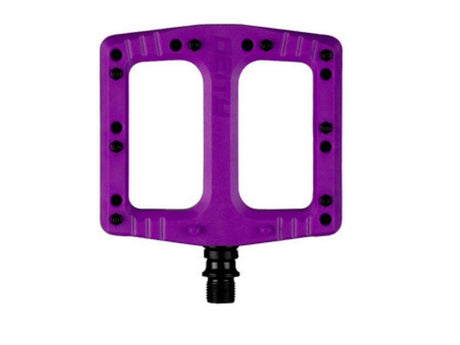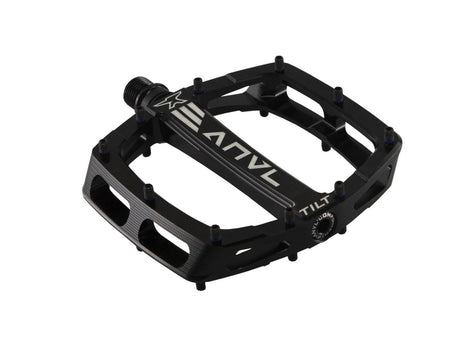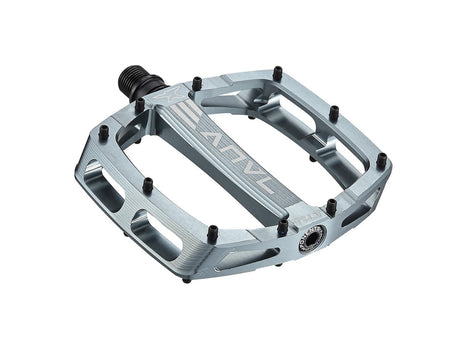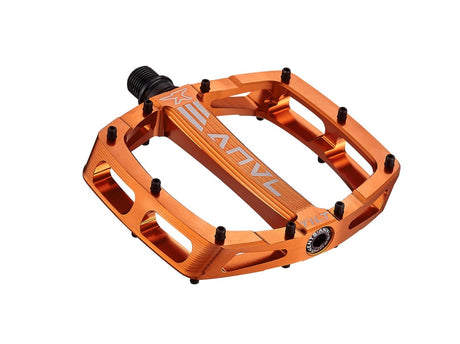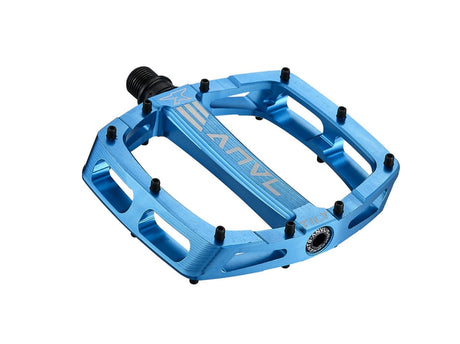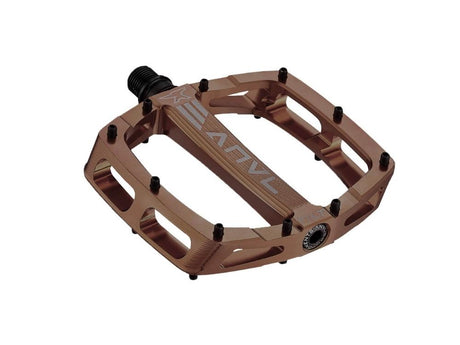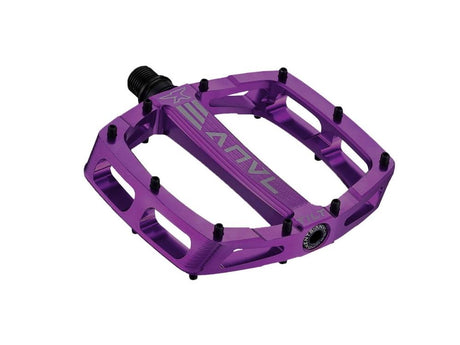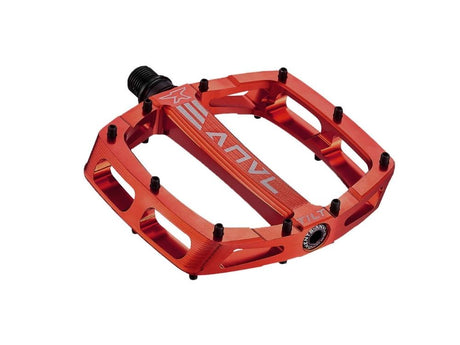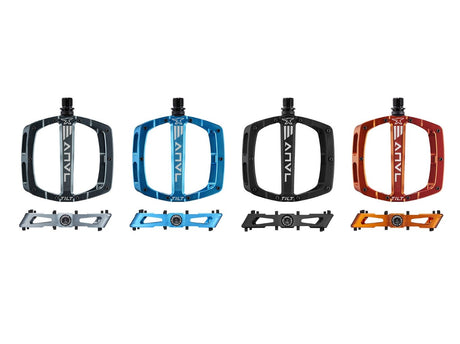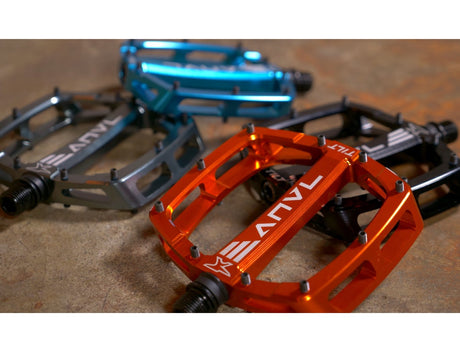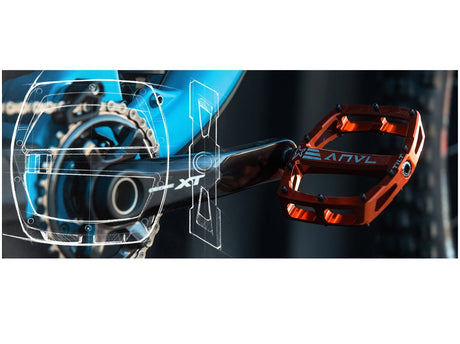Both Aluminum, Both Large and In-Charge. Which Would You Choose?
DMR Vault vs OneUp Components Aluminum:
Two Of Our Favorite Pedals Compared
In this comparison, I’ll be looking into the similarities and differences of two awesome mountain bike pedals, the Vault by DMR Bikes and OneUp Component's Aluminum Pedal. They’re both super grippy and reliable, both are made from 6061 aluminum with chromoly steel axles, and both would be a great fit on anything from hardtails to trail and downhill bikes. However, some of the differences like the shape of their platform and their bearing designs make for a fairly different experience on the trail. My goal with this comparison is not to convince you that one pedal is better than the other but to show you that both pedals offer unique strengths that might make you lean towards one more than the other.
Before diving into the comparison, it’s worth mentioning that, while I’ve spent a handful of rides on the OneUp Aluminum Pedal, I’ve chosen the DMR Vault for my personal bike. It's not that I think the OneUp is inferior, I just prefer the design and feeling of the Vaults more. It’s purely a decision of preference and I’ll do my best to remain unbiased through this comparison.
So, now that we have the introduction and disclaimer out of the way, let's dive into the comparison.
DMR Vault
At a Glance:
- 430g
- 105mm x 105mm
- Deep Concave Profile
- 14 - 17mm thick
- Inner high-load DU bushing + Sealed Outer Bearing
- Rebuild kit available
- Cost: $163.30 - $178.80 USD
OneUp Aluminum
At a Glance:
- 365g
- 105mm x 115mm
- Subtle Convex Profile
- 8.3 - 12mm thick
- 1 large sealed inner bearing + 3 small outer bearings
- Rebuild kit available
- Cost: $129.00 USD
Platform Size
First, let's discuss platform size. Both of these pedals have fairly large platforms made of 6061 aluminum. Neither are ridiculously huge, but they’re big enough to satisfy a variety of foot sizes. On paper, the OneUp Aluminum Pedal has a bit of extra surface area due to an additional 10mm of length, but don't let that extra real estate sway your decision too much. It’s hard to notice a difference in size when comparing the two side by side. Both platforms strike a nice balance between enough surface area to keep your foot comfortable and secure in rough terrain but not so big that you're constantly striking pedals. As far as I'm concerned, both pedals have the same sized platform.
Platform Profile
In my mind its the platform shape and profile that differentiates these pedals the most.
On one hand there’s the Vault, designed with a deep concave profile. On the other hand, the OneUp Aluminum Pedals have a convex design, where they opt to thin the perimeter and keep the center thicker. There are advantages and disadvantages to both of these designs.
The DMR Vault is roughly 14mm thick around the axle and 17mm thick at the perimeter. At a glance, 3mm doesn't seem like a noticeable difference, but it is. As soon as you stick your foot on the Vault, you’ll notice the center of your foot sinking deep into the middle of the pedal. The pins feel like they're digging extra deep into the sole of your shoe leaving your foot glued in place. This “locked-in” feeling is the reason I chose the Vault for my personal bike. Micro-adjustments and small foot movements aren’t quite as easy as with other pedals, but I don’t seem to move my foot around much and enjoy my feet feeling extra stuck in place. This isnt something that everyone wants though. There's a lot of folks who prefer a pedal that allows their foot to pivot around and easily make micro-adjustments. For those people, the OneUp Aluminum pedal really shines.
Opting for a subtle convex profile, OneUp made the center of the aluminum body slightly thicker (roughly 12mm thick) than the perimeter (roughly 8.3mm thick). They claim the convex shape improves grip compared to other shapes by conforming to the shape of your foot's natural arch. I'm not sure that I totally agree with that statement though. When riding with the OneUp pedal I definitely didn't feel improved grip compared to the Vault, but I wouldn't say that's a bad thing. The OneUp still felt secure and confidence inspiring, but because of the convex shape, your foot doesn't sink so deep into the pedal. Making it easier to make micro-adjustments. All it takes is a small tilt and pivot of your foot rather than fully lifting your foot off the pedal.
Both pedals have platform designs that offer unique strengths. Personally, I prefer the super grippy feeling offered by DMR’s concave design, but for those who like to move their feet around more, the OneUp Aluminum Pedal might be a better option.
Pin Size & Body Thickness
I’m going to try and keep this section short and simple. While the two pedals do have different thicknesses and pin lengths, I don’t think it makes a huge difference when riding. Simply put, the DMR Vault is thicker and the OneUp Aluminum Pedal is thinner. I don’t feel like I get more pedal strikes with the Vault, but there’s no skirting around the fact that it’s roughly 5mm thicker than the OneUp Pedal. OneUp clearly takes the cake if a super thin pedal is a priority.
As for pins, the Vault’s are thicker and slightly shorter, but other than that, I wouldn't say they feel any different than OneUp’s. It’s worth mentioning that both pedals have longer pins around the outside of the pedal and shorter pins near the axle. Shorter pins in the center of OneUp's Aluminum Pedal may lead you to think that the pedal will feel concave but it actually gives the pedal a flatter feeling. Coversely, the Vault’s shorter inner pins accentuate the concave shape of the aluminum body, making it feel even deeper.
The Vault is a bit thicker than the OneUp but it’s not thick enough to cause performance issues. The difference in pin heights also feels negligible when considering the overall design of each pedal.
Bearing Design & Compatability
The OneUp Aluminum Pedal uses a large sealed bearing on the inboard side and three small sealed bearings on the outside of its chromoly spindle while DMR chose to use a single sealed bearing on the end of the spindle and a high-load DU bushing on the inboard side. Again, just like the differences in profile and shape, both of these bearing designs have advantages and disadvantages.
The advantage of OneUp’s sealed bearing at both ends is a pedal that spins smoothly while minimizing the grime and gunk that enters the system. The downside is that in order to house the oversized bearing, the pedal body needs a sizable bulge on the inboard side, creating some compatibility issues with SRAM’s Carbon cranks and protective rubber crank boots. We’ve also gotten a handful of comments from customers claiming that the large bearing housing gets in the way of foot placement, but it never bothered me while I was using them.
For the Vault, DMR decided to keep it simple and use a DU bushing rather than a bearing near the crank and a single sealed bearing on the other end. A DU bushing on the crank-side is simple, reliable, and a fairly traditional design. It might not spin as freely as a bearing or keep the system as clean, but it can take tons of abuse and doesn’t require a large bulge on the inside of the pedal. Therefore, the Vault doesn’t have any compatibility issues like OneUp's Aluminum Pedal.
The OneUp Aluminum Pedal suffers from compatibility issues due to its oversized bearing while the Vault might need to be rebuilt more frequently due to its DU bushing.
Reliability
I like to preface the reliability question with the phrase "anything will break if you hit it hard enough" and neither of these pedals are exceptions to that statement. However, both pedals strike me as strong and dependable options. That's not to say that they’re perfect though…
Shortly after installing my Vaults, the left pedal started to spin with a little more resistance than the right. I wasn’t too surprised though. It’s been a very wet winter in Bellingham and the trails have been vary sloppy. Luckily, it was easily remedied. All I had to do was pull out the spindle, clean, regreese, and reassemble the pedal, which took maybe ten-minutes and it felt great again. No problem at all.
The OneUp Pedal isn't immune to issues either. I haven’t seen any problems first hand, but we have received a few reports of them developing some annoying squeaking sounds. Again, just like the Vaults, this is easily remedied with a tear-down, clean, re-grease, and reassembly. A process that is also very easy and should only take a handful of minutes.
No product is totally immune to issues. What’s important is that the issues are easily resolved. So far, the known issues of both pedals are minimal and have simple solutions. I still consider both pedals to be very reliable.
Serviceability
Both pedals are easily rebuildable. DMR and OneUp both offer bearing rebuild kits and replacement pin sets. The OneUp Aluminum Pedal does require a cassette lockring tool to remove the lock-ring holding in the spindle, but other than that, both pedals are easy to service with standard tools.
Final Thoughts
Both pedals offer a reliable design, easy rebuild, and plenty of grip while maintaining their own unique ride feel. Personally, I jive better with the DMR Vault. I like the deep concave design and the over-the-top grip it offers, but plenty of people prefer the thinner, convex design of the OneUp Aluminum Pedal. The OneUp Aluminum Pedal is also about $30 cheaper and ~65 grams lighter, so that’s a consideration also. Ultimately, there’s advantages to both designs and the best option will depend on your own preferences.
A difference of about $30 and ~65 grams of weight is worth considering but ultimately, I suggest focusing on the particular ride feel that you want.

